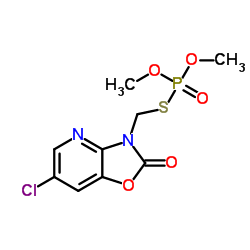Characterisation of esterases as potential biomarkers of pesticide exposure in the lugworm Arenicola marina (Annelida: Polychaeta).
Marie L Hannam, Josephine A Hagger, Malcolm B Jones, Tamara S Galloway
Index: Environ. Pollut. 152(2) , 342-50, (2008)
Full Text: HTML
Abstract
Here, we identify and characterise cholinesterase (ChE) and carboxylesterase (CbE) activities in the body tissues of the sediment dwelling worm Arenicola marina. Exposure to the organophosphorus pesticide azamethiphos yielded an in vitro IC50 of 5 microg l(-1) for propionylcholinesterase (PChE). PChE was significantly inhibited in vivo after a 10 day exposure to 100 microg l(-1) azamethiphos, equivalent to the recommended aquatic application rate (ANOVA; F=2.75, P=0.033). To determine sensitivity to environmental conditions, A. marina were exposed for 10 days to field collected sediments. PChE activity was significantly lower in worms exposed to sediments from an estuary classified to be at high risk from point source pollution by the UK Environment Agency (ANOVA; F=15.33, P<0.001). Whilst causality cannot be directly attributed from these latter exposures, they provide an important illustration of the potential utility of esterase activity as a biomarker of environmental quality in this ecologically relevant sentinel species.
Related Compounds
| Structure | Name/CAS No. | Molecular Formula | Articles |
|---|---|---|---|
 |
Azamethiphos
CAS:35575-96-3 |
C9H10ClN2O5PS |
|
Albumin binding as a potential biomarker of exposure to mode...
2008-06-01 [Biol. Cell 13 , 343-63, (2008)] |
|
Evaluation of insecticidal efficiency of certain new selecti...
1992-12-01 [J. Egypt. Soc. Parasitol. 22(3) , 839-49, (1992)] |
|
Effect of synergists on the oral and topical toxicity of aza...
1992-08-01 [J. Econ. Entomol. 85(4) , 1041-5, (1992)] |
|
The lethality of Salmosan (Azamethiphos) to American lobster...
1999-06-01 [Ecotoxicol. Environ. Saf. 43(2) , 165-9, (1999)] |
|
Safety of azamethiphos in eel, seabass and trout.
2004-02-01 [Pharmacol. Res. 49(2) , 171-6, (2004)] |